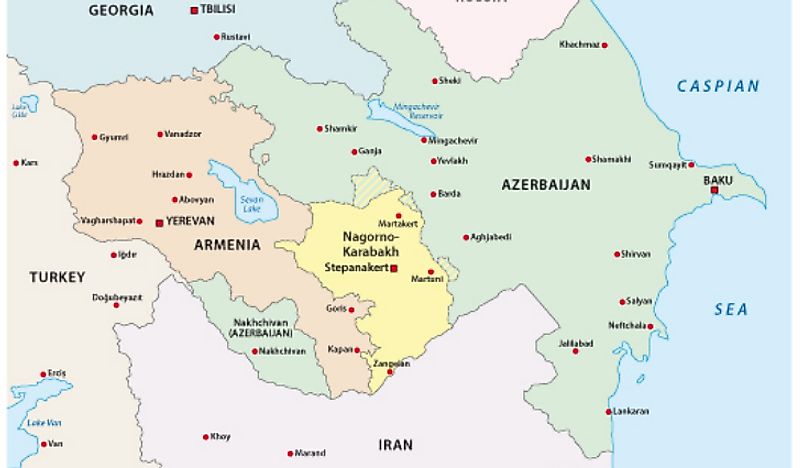What And Where Is Nagorno-Karabakh?

Nagorno–Karabakh is in a somewhat landlocked region in the Southern Caucasus areas of Azerbaijan. a lies between lower Karabakh in Armenia and Zangezur Mountains as it covers the southeastern range of the Lesser Caucasus Mountains. It is recognized as the part of Azerbaijan, but its intriguing government takes shape as the Nagorno-Karabakh Republic, and is established on the basis of being an autonomous oblast. With the end of the war in the region in the year 1994, the governmental bodies of Armenia and Azerbaijan have held ongoing peace talks. The region lies approximately 3,600 feet above sea level, and there are notable peaks in the border mountain range of Murovdag and the Great Kirs mountain chain.
5. History
The people of Nagorno-Karabakh hstorically belong to the Kura-Araxes culture, which lies between the Kura and Araxes rivers. The place has long been occupied by local and migrant tribes, and these peoples,unlike their neighbors, were non of Indo-European groups. Armenian culture later developed in the medieval Nagorno-Karabakh area. The region witnessed great changes in High Middle and Late Middle Ages, as the upper Karabakh area was given to local Armenian princes to rule. When internal conflicts took place in the region during the middle of the 18th Century, it led to the formation of Karabakh Khanate by Turkic and Persian rulers, until being taken over by the Russian Empire in 1806. The most recent war in the region also found roots in conflicts occurring during the time under Soviet rule.
4. Economy
The economic system of the country has been adversely affected by the many internal conflicts seen through the years. Nonetheless, in the new millennium, many international investments from Russia, United States, France, Australia, and Iran have arrived in the region to fuel its growth. Many sectors have also flourished in the country as a result, such as the development of Karabakh Telecom to regulate and service telecommunications in the region. Since 2002, copper and gold mining has also developed, and the wine business has also benefited the economy as a whole. As there are many cultural sites for tourists to visit in this area, such locales as the Amaras Monastery, Gandzasar Monastery, and Yerits Mankants boost the economy through tourism.
3. Culture
“We are our mountains” (“Tatik yev Papik” in the Eastern Armenian dialect) is displayed on the coat of arms of Nagorno-Karabakh, and in Stepanakert one of the largest historical monuments in the area goes by the same name. The Artsakh State Museum is also known for its ancient artifacts and restoration of Christian Manuscripts. The region has many of its own musical groups, who conduct performances of many nationalist songs to set them apart as a unique, independent culture. The people in the region are also interested in such sports as association football (soccer), basketball, volleyball, and sailing. The largest group of believers in the country belong to the Armenian Apostolic Church, an Oriental Orthodox Christian body.
2. Habitats and Ecology
The habitat and ecology of the region are largely dominated by the unique Plane Trees which cover significant parts of the region's land area. There is a game reserve in the place where various animals and birds are protected, inclusive of Roe deer, Mountain goats, wild boars, partridges, and many other species. There are various kinds of reserves and protected coastlines that have been formed in the Nagorno-Karabakh region to conserve these endangered species.
1. Ongoing Conflicts and Territorial Disputes
There are many conflicts which are ongoing in the area between Armenia, Nagorno-Karabakh, and Azerbaijan as they cannot fully resolve conflicts amongst one another. Even the ceasefire referendums which were passed are also being breached, especially by Azerbaijan. Many peace talks have been held in the region, but still the threat of war goes on in this particular region of the world.







